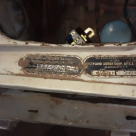1974 Leyland Mini GTS
Specifications
Paint color code
Unknown
Trim colour and material
N/A
Mileage
Unknown
km
Transmission
Manual (floor shift)
Engine Type
4 cylinder
Vehicle location
South Africa , KZN Midlands , Greytown
Found this GTS advertised on Ananzi.co.za. Limited details in the ad, other than noting the car had been stripped for restoration. from the limited images it looks fairly solid and fairly complete/original. Hopefully it finds a good home and the purchaser restores it to original condition. There arent mant around, and they are a significant international Mini! The late Cooper S of South Africa. Check out the others on the register below.
You are about to contact the author of this vehicle.
Be aware this vehicle has currently not been listed for sale!
So refrain from price bidding.





